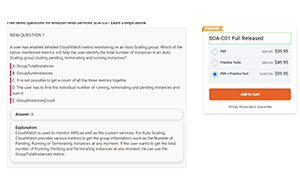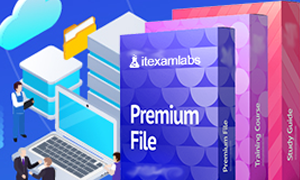- Home
- Oracle
- 1Z0-146 Exam
Oracle 1Z0-146 - Oracle 11g: Advanced PL/SQL - Online Practice Test
Here is what people say about us
"Passed on the first try! I loved that the questions are updated as new exams are released, in order to keep up the most recent content being covered in the test. The date at the top of each page shows how current the material was, which was nice to see. "
"At first glance I thought this site is just like the other 99% websites in this industry, but boy I was wrong...its funny that two weeks before the exam I knew nothing about 1Z0-146, but with this amazing site I managed to study very quickly and pass the exam easily without spending tons of money and time on preparing for the exam."
"As a professional in my field for over 8 years I could tell that not only were these questions real, but that an expert had been involved in designing and reviewing the questions for the Oracle 11g: Advanced PL/SQL 1Z0-146 exam. "
Are you looking for real exams dumps for the 1Z0-146 Oracle 11g: Advanced PL/SQL exam? ITExamLabs.com is dedicated to provide real and updated exam questions and answers, FREE of cost.
The best way to prepare for 1Z0-146 exam is not reading a text book, but taking 1Z0-146 vce exam and understanding the correct answers. Practice questions help prepare students for not only the concepts, but also the manner in which questions and answer options are presented during the real exam.
ITExamLabs.com provides not only actual Oracle 1Z0-146 practice test, but also detailed answers, explanations and diagrams. Having authentic and current exam questions, will you pass your test on the first try!
Q1. Which two statements are true about the usage of the DBMS_DESCRIBE.DESCRIBE_PROCEDURE procedure? (Choose two.) A. You can describe remote objects. B. You can describe anonymous PL/SQL blocks. C. You can describe a stored procedure, stored function, packaged procedure, or packaged function. D. You can obtain information about the position, name, and data type of the arguments of a procedure. View AnswerAnswer: C,D Q2. You set…
Q1. Which guidelines should be considered when designing and using cursors in a PL/SQL block? ? (Choose all that apply.) A. When fetching from a cursor, fetch into a record. B. Use parameters with cursors so that the result set for the cursor is not tied to a specific variable in a program. C. Use the %NOTFOUND attribute in combination with the SELECT…
Q1. You executed this command to gather information about the memory allocation for storing query results: SQL> execute dbms_result_cache.memory_report View the Exhibit and examine the output for the execution of the DBMS_RESULT_CACHE.MEMORY_REPORT procedure. Which two statements are true about the output in the Exhibit? (Choose two.) A. In total, four blocks are used by the result cache. B. Currently 52 KB is allocated to the result…
Q1. Which two statements are true about associative arrays and nested tables? (Choose two.) A. Only associative arrays can hold an arbitrary number of elements. B. Only associative arrays can use numbers and strings for subscripts. C. Both associative arrays and nested tables can hold an arbitrary number of elements. D. Both associative arrays and nested tables can use numbers and strings for subscripts. View…
Q1. Which three actions can be performed by using the DBMS_ASSERT package to prevent SQL injection? (Choose three.) A. Detect a wrong user. B. Check input string length. C. Verify qualified SQL names. D. Validate TNS connect strings. E. Verify an existing schema name. F. Enclose string literals within double quotation marks. View AnswerAnswer: C,E,F Q2. Examine the structure of the TEXT_TAB table. Name Null? Type TEXT_ID NUMBER DOC1…


